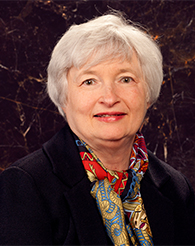| << Chapter < Page | Chapter >> Page > |
By the end of this section, you will be able to:
In making decisions about the money supply, a central bank decides whether to raise or lower interest rates and, in this way, to influence macroeconomic policy, whose goal is low unemployment and low inflation . The central bank is also responsible for regulating all or part of the nation’s banking system to protect bank depositors and insure the health of the bank’s balance sheet.
The organization responsible for conducting monetary policy and ensuring that a nation’s financial system operates smoothly is called the central bank . Most nations have central banks or currency boards. Some prominent central banks around the world include the European Central Bank, the Bank of Japan, and the Bank of England. In the United States, the central bank is called the Federal Reserve—often abbreviated as just “the Fed.” This section explains the organization of the U.S. Federal Reserve and identifies the major responsibilities of a central bank.
Unlike most central banks, the Federal Reserve is semi-decentralized, mixing government appointees with representation from private-sector banks. At the national level, it is run by a Board of Governors, consisting of seven members appointed by the President of the United States and confirmed by the Senate. Appointments are for 14-year terms and they are arranged so that one term expires January 31 of every even-numbered year. The purpose of the long and staggered terms is to insulate the Board of Governors as much as possible from political pressure so that policy decisions can be made based only on their economic merits. Additionally, except when filling an unfinished term, each member only serves one term, further insulating decision-making from politics. Policy decisions of the Fed do not require congressional approval, and the President cannot ask for the resignation of a Federal Reserve Governor as the President can with cabinet positions.
One member of the Board of Governors is designated as the Chair. For example, from 1987 until early 2006, the Chair was Alan Greenspan. From 2006 until 2014, Ben Bernanke held the post. The current Chair, Janet Yellen, has made many headlines already. Why? See the following Clear It Up feature to find out.

What individual can make financial market crash or soar just by making a public statement? It is not Bill Gates or Warren Buffett. It is not even the President of the United States. The answer is the Chair of the Federal Reserve Board of Governors. In early 2014, Janet L. Yellen , shown in [link] became the first woman to hold this post. Yellen has been described in the media as “perhaps the most qualified Fed chair in history.” With a Ph.D. in economics from Yale University, Yellen has taught macroeconomics at Harvard, the London School of Economics, and most recently at the University of California at Berkeley. From 2004–2010, Yellen was President of the Federal Reserve Bank of San Francisco. Not an ivory tower economist, Yellen became one of the few economists who warned about a possible bubble in the housing market, more than two years before the financial crisis occurred. Yellen served on the Board of Governors of the Federal Reserve twice, most recently as Vice Chair. She also spent two years as Chair of the President’s Council of Economic Advisors. If experience and credentials mean anything, Yellen is likely to be an effective Fed chair.

Notification Switch
Would you like to follow the 'Principles of economics' conversation and receive update notifications?